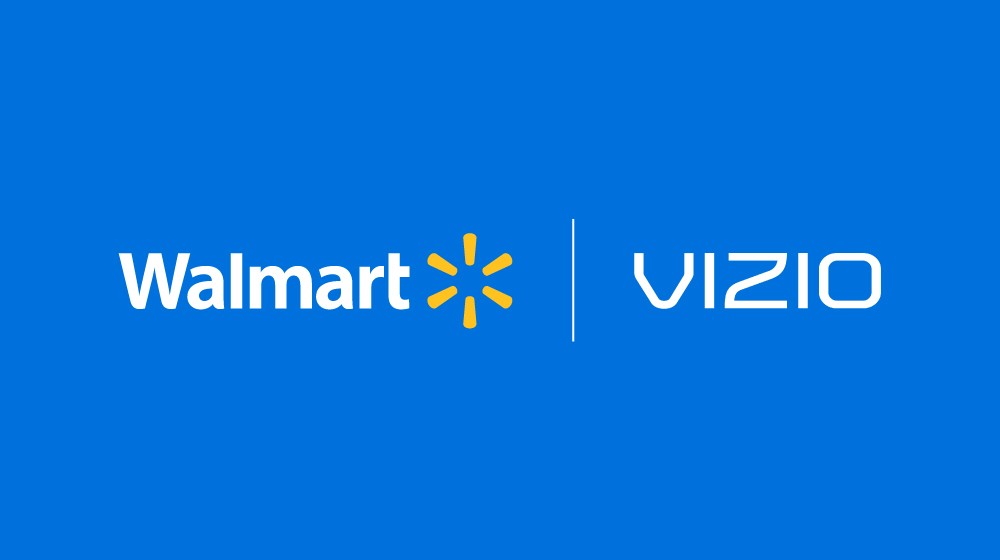
What Does The Walmart-VIZIO Deal Mean For Retail Digital Signage? Both Not Much And Maybe A Lot
February 22, 2024 by Dave Haynes
News of retail giant Walmart buying TV manufacturer VIZIO has promoted lots of discussion about what this means for in-store digital signage and retail media networks, and the answer is both not much and probably quite a lot.
Walmart is buying VIZIO for $2.3 billion to get quick access to some 18 million active accounts on its smart TVs, via a platform and TV operating system called SmartCast. That platform gives Walmart a way to reach consumers at scale on connected TVs, a medium that is rapidly overtaking more traditional linear broadcast/cable TV.
VIZIO’s platform already has more than 500 direct advertiser relationships, including many of the Fortune 500. There is very little money in the hardware sales side of the TV business, but lots in advertising. Advertising accounted for the majority of VIZIO’s gross profit.
SmartCast and the integration with Walmart’s vast amounts of data about shopping behaviors, both online and in-store, can be mashed up to contextually target shoppers at home as they’re watching streaming TV. It represents a way to better compete with Amazon’s so-called flywheel strategy of having media, ads and commerce through Prime Video and its Fire media players, Amazon ads and the mother of all online commerce sites.
Walmart has its core physical and digital selling platforms, and ads via Walmart connect. It does not have media, as Amazon does. It’s been speculated that Walmart could buy a media company or streaming platform to finish off its own flywheel.
It’s quite unlikely having a TV manufacturer in the company family – especially one that outsources the actual manufacturing – would have any bearing on what display technology gets used in Walmart stores for in-store digital media. They’re TVs, not pro displays, first of all. And second, in-store digital’s future is probably a lot more about stretched and ribbon displays and small form factor shelf-edge screens than it is about landscape-mode, TV-like displays that would eat up merchandising space or have to be suspended above the natural line of sight of shoppers.
It’s also important to understand that while retail media networks are getting a huge amount of attention these days, most of the spend goes to online and mobile, not to in-store screens.
However, when market leaders like Walmart make moves, others tend to follow (McDonald’s undoubtedly influenced wide adoption of digital menu boards and drive thru displays). The media proposition is increasingly compelling for screens in-store, with data from Nielsen and Placer.ai suggesting the big mass merchandisers ike Walmart and Target, and national grocery chains, have monthly unique audience counts that exceed or rival that of the four main US broadcasters, such as CBS and NBC.
Seeing Walmart get very serious about retail media will likely progress some conversations happening with other retailers and companies with the technologies that can make in-store digital happen.
My friends at content partners invidis have similar thoughts about this …



I am rather surprised this type of acquisition has not happened until now… With all the major display manufacturers now sporting “Platforms” and “Active Users” or “Members” or “Accounts”… and with built-in media players and CMS, the opportunities for advertising are both obvious and ominous. For example, before every movie on Paramount+, there are commercials. For now they are cross-promoting within the streaming service, but that will change I’m guessing…and soon! The “new” viewing model is rapidly going back in time. Remember when they told us cable would not have commercials because you were already paying for that channel? How’d that work out for you?
Where does Vizio source it’s glass
from Googling … In total, eight companies, including AmTran Technology, Foxconn, BOE, Innolux, KIE, Tonly, TPV, and Zylux, make Vizio TVs within their facilities. Most notably, AmTran and Foxconn, manufacture over 60% of all Vizio TVs.